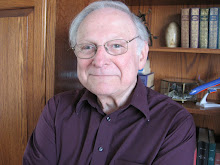On “60 Minutes” Lesley Stahl referred to a brand-new, but uninhabited, Chinese city as a Potemkin city. Similarly, when President Obama visited Burma last year, the New York Times suggested that in sprucing up the decrepit University, authorities were creating a Potemkin campus. For me, Potemkin conjures up the 1925 silent film Battleship Potemkin by Sergei Eisenstein, which dramatizes the 1905 mutiny aboard that ship. So who or what is Potemkin?
Grigori Potemkin (1732-1791) was a Russian field marshal, statesman, and courtier of Empress Catherine the Great. According to one account, during a visit by Catherine to the Crimea in 1787, Potemkin wanted to impress her with the value of the lands he had conquered in that region. He had hollow façades of entire villages constructed along her route to make it look as if there were thriving communities in place, when in fact, the land was barren.
Potemkin has thus come to mean any fabrication intended to make people believe something is better than it really is.
In a similar fashion, when Russian authorities toured poverty-stricken East Germany during the Cold War, local officials would refurbish only the ground floors of dilapidated buildings on the road from the airport, knowing that the officials would view them from the windows of their limousines, and the ground floor is all they would see.
The Bard of Buffalo Bayou has been writing Potemkin verse since he first put pen to paper. Try and see behind the glittery façade of this one:
When Potemkin built a façade,
Very few people hurrahed,
They said, “We don’t mind
That there’s nothing behind,
It’s what’s out in front that’s so odd.”
So Potemkin said, “All right, look here—
If the front of my builiding seems queer,
There’s no need to curse it,
I’ll simply reverse it,
And then feast your eyes on my rear.”

No comments:
Post a Comment